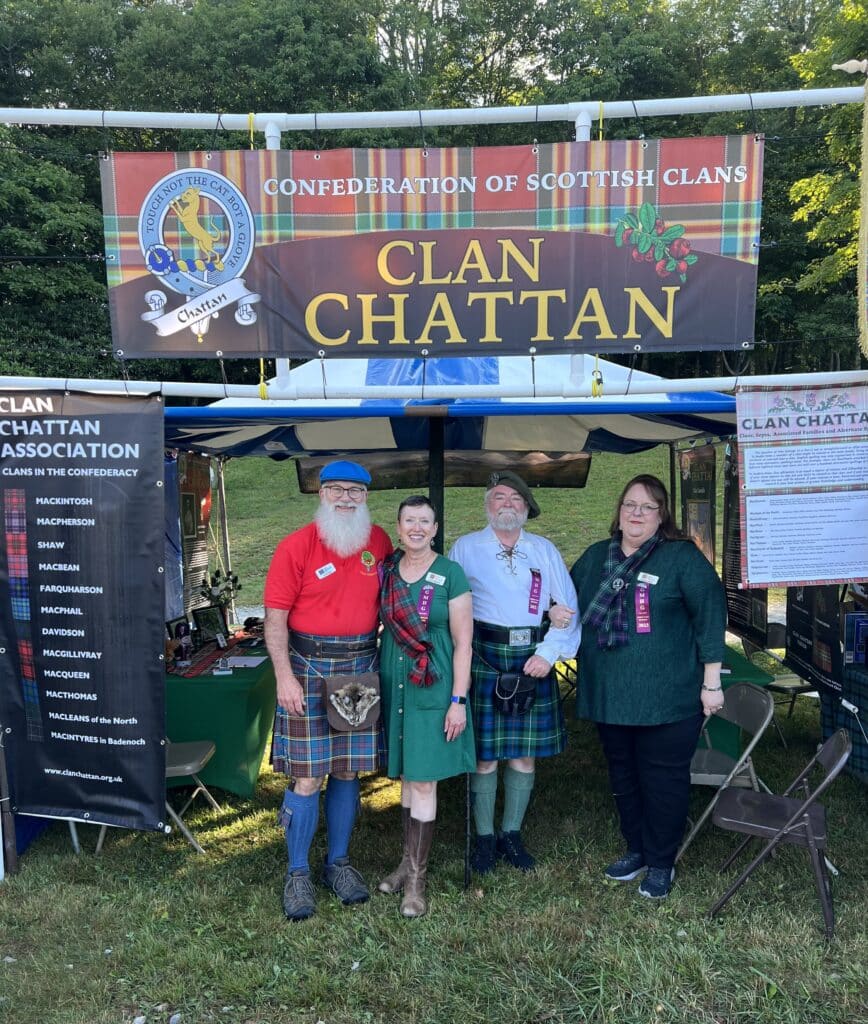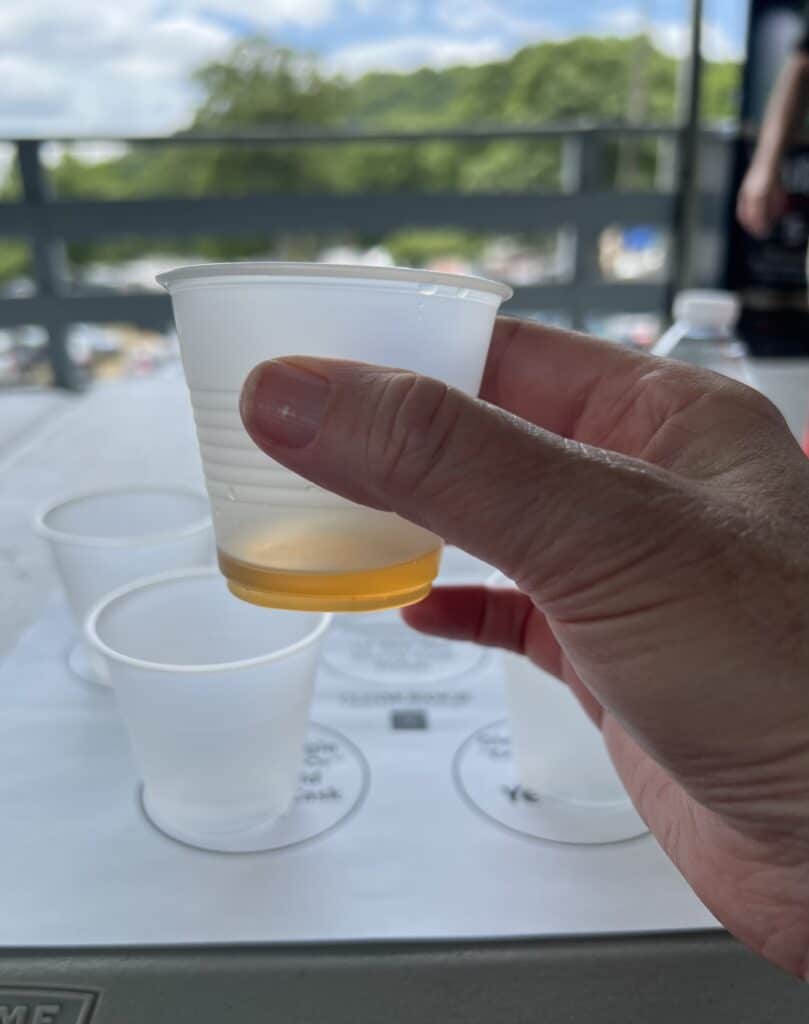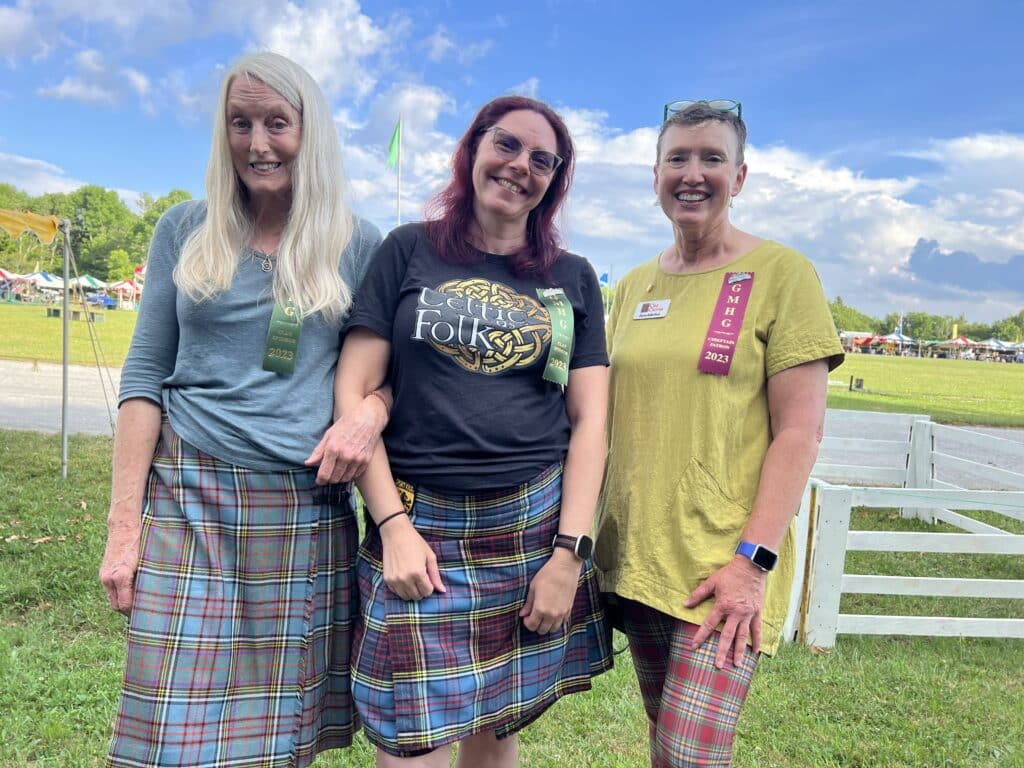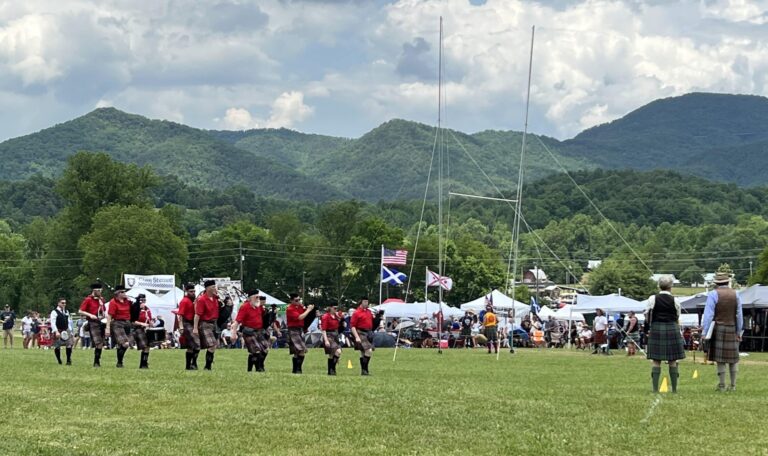Did you know that the United States has more Highland games and Scottish festivals than any other country in the world (including Scotland) with more than 200 events every year?! Some of the largest games in the United States see an attendance of 30,000 to 50,000 over the course of a weekend and include the Grandfather Mountain Highland Games in Linville, NC; the New Hampshire Highland Games at Loon Mountain Resort, and the Scottish Highland Games and Gathering in Pleasanton, CA.
While the exact origin of the Highland games is often debated, most agree that they were likely connected with the clan system and a desire by chiefs to test their clan kinfolk to find the best people for specific tasks. Today the games are a mix of sporting, cultural and social events with a variety of competitions including heavy athletics, piping and drumming, highland dancing, fiddling, and sometimes even Gaelic singing and verse. And the games are definitely not limited to competitions. With a variety of music, delectable scran (Scottish slang for food), Scottish and Irish wares, Highland coos (cows), sheep herding demonstrations, whisky tasting and more, there truly is something for everyone!





Based on my experiences at Highland games and Scottish/Irish festivals over the last five to six years, I’ve put together these 10 tips to help you get the most from the Highland games whether you’re a newbie or a regular.
1. Be prepared for Scottish weather.
Scottish folk say you can often experience all four seasons in one day in Scotland. Many festivals and games in the United States can be the same. They are typically held rain or shine, and so it’s rare for an event to be canceled because of the weather. I’ve been to events where I was blasted by the scalding sun, soaked by torrential rains and frozen by blowing snow. But for the most part, I still had a great time because I was prepared. Include a small umbrella or two in your backpack for both rain and sun protection.
2. Follow Robert Burns and be “up in the morning early.”
If it’s a summer event, it will likely be cooler, less crowded and easier to find parking and/or catch a shuttle in the morning. Once there, head straight for the food vendors to fortify yourself for the day with a full Scottish breakfast (including haggis), a Scotch egg or my morning favorite, sticky toffee pudding! Peruse the schedule while you eat, and you’ll be prepared for the day.
3. Dance a jig or at least listen to one.
Whether you like Celtic rock, Scottish folk or nothing but bagpipes, there’s a group or band for everyone at festivals and games. Typically, music stages are in tents so they offer an opportunity to get out of the sun or rain and to rest your feet (or dance a jig!). Popular groups (think Albannach) attract large crowds so study the event schedule and plan appropriately.
4. Ask a Highland games athlete which event is their favorite.
Heavy throwers (that’s not an insult, the athletes throw a lot of heavy stuff!) must compete in ALL the events offered in the heavy athletics competition. Depending on the games that can vary from seven to nine different throwing events over the course of one day and may include: caber, sheaf toss, light and heavy hammer, light and heavy weight for distance, weight for height or weight over bar, open stone and braemar stone. Do make time during the day to watch and appreciate the effort these female and male Highland warriors put into the competition.



5. Participate in activities for the laddies and lassies.
Celtic festivals and Highland games are great for families because many have activities or areas within the games designed specifically for children. At the Smoky Mountain Scottish Festival and Games, kids 12 and under can compete in a scaled down version of the Highland athletic events, and kids 15 and under get in free! The Stone Mountain Highland Games offer a mini St. Andrew’s golf challenge, an archery shooting range, craft activities like making a DIY sporran and much more for the wee ones.

6. Find your clan or adopt one.
Scottish heritage groups are a great stop for exploring whether a family surname is connected to a Scottish clan or family district. If you can’t find a heritage group, go by any clan tent and ask for their help. Many use a book called “Tartan for Me!” to look up Scottish surnames. Once you’ve found a clan connection, visit their tent and learn more. The larger Highland games typically have from 50 to 100 different clans represented at their events; all of which are eager to share their history, tartans and membership.
Learn more about whether your ancestors were part of a Scottish clan here.

7. Try a wee dram.
Though they require separate tickets (usually ranging from $25-$50), whisky tasting seminars are a regular and fun part of Scottish festivals. Hosted by experienced volunteers or distillery representatives, the one-hour events give participants an opportunity to taste a variety of expressions of Scotch whisky. Note: the country of origin determines the spelling: in Scotland, Canada and Japan, it’s spelled whisky without an “e.” In the United States and Ireland, it’s whiskey with the “e.” How it is distilled doesn’t affect the spelling — only the country of origin. If you want to be perfectly clear, then use the Gaelic — uisge beatha (pronounced oosh-kuh beh-ah) or the water of life!
8. Buy some tartan.
There’s no Scottish law that says you can only wear a tartan if you have a family connection to it. If you see a tartan that you like, go for it – be plaid to the bone! Highland games and festivals are about embracing all things Scottish – even if it’s just for the weekend. Visit the vendors area and stock up on tartan as well as shortbread, tea, jewelry, and don’t forget the kilt!
9. Eat some haggis.
Most people immediately turn up their noses when you mention haggis, which is a Scottish dish made with offal or pluck (traditionally from lamb heart, lungs and liver), oatmeal, suet and spices, and then stuffed inside a sheep’s stomach. While you can make your own traditional haggis in the United States, you can’t buy it because sheep’s lungs are considered an inedible animal by-product by the USDA. The haggis you find at Highland games is typically made with beef or lamb mixed with oatmeal and spices, and is delicious. The Scottish Gourmet, based in North Carolina, and often found at Highland games throughout the South, sells a haggis made with venison. Yum! If you’re dead set against trying haggis, there are plenty of other festival food options to try including meat pies, bridies, pasties, sausage rolls, fish and chips and don’t forget the sticky toffee pudding.

10. Enjoy a wee blether.
The absolute best part of any Highland games or Celtic festival is making new friends and learning people’s stories about their heritage. We Scottish Americans love to chat (or blether) and what better subject than our love for our heritage. While the population of Scotland is around 5.45 million, there are an estimated 25 million Americans of Scottish descent in the United States today. So whether you are Scottish American or love all things Scottish, git yerself to a Highland games or Celtic festival near you today!!



1 Comment
My favorite part of the highland games is connecting, whether with old friends or new. It’s the best experience to come home with a new friend in your phone!